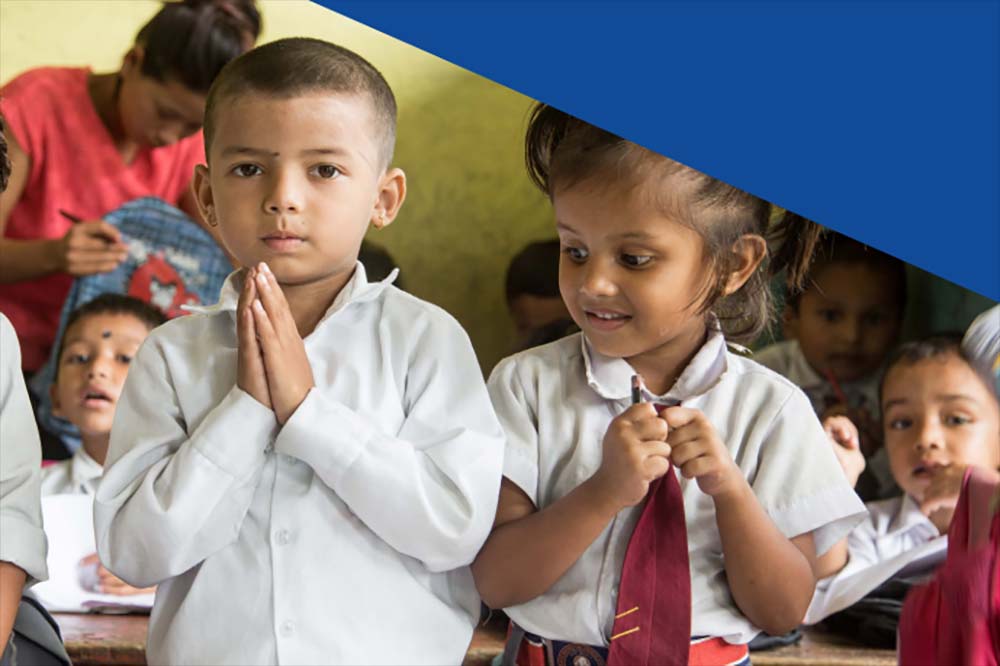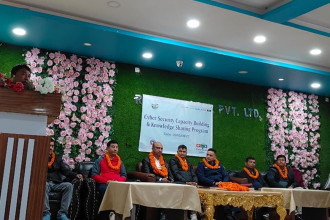
KATHMANDU: Some improvement has been witnessed in reducing child labour over the last one decade in Nepal. However, 1.1 million children are found working in brick kilns, carpet factories and entertainment businesses among others.
A joint report prepared by the Central Bureau of Statistics of the National Planning Commission and International Labour Organisation (ILO) states that nearly 1.1 million children are involved in child labour of which 0.2 million children are involved in its worst forms.
The statistics reveal that child labour is still significant although the overall trend is declining in Nepal (2.6 million in 1998, 1.6 million in 2008 and 1.1 million in 2018).
Agriculture is found to be the sector with the highest per cent of child labour (87%) and Dalit children constitute the highest (19.4%) proportion based on caste and ethnicity. The report assesses the status of child labour and it opens the door to implement the second National Master Plan (2018 – 2028) on Child Labour, recently endorsed by the Ministry of Labour, Employment and Social Security (MoLESS).
The dis-aggregated data will also be useful for planning and designing child-focused programmes and activities at provincial and local levels by the government and other development partners in Nepal.
It is stated that among seven million children (total children) between the ages of 5 and 17 in Nepal, 1.1 million children (15.3%) were found to be engaged in child labour which is a significant decline in child labour in comparison to 2008 (1.6 million).
The child labour prevalence for children between 5 and 13 years is 18% while it is 10% for children between 14 and 17 years.
Similarly, female children are more likely to be engaged in child labour (17%) than male children (14%). Child labour is the highest in Karnali (24.6%) followed by Sudurpashchim (20.9%), Province 1 (17.6%), Gandaki (16.1%), Lumbini (15.8%), Madhes Province (11.5%), and the lowest in Bagmati (8.9%). The child labour prevalence is higher in rural areas (20.4%) than in urban areas (12.1%).
The report found that among the total children engaged in child labour, about 87% are engaged in the agriculture sector while 13% are in other sectors. The highest child labour prevalence is found among Dalit (19.4%), followed by Janajati (18.1%), Brahmin/Chhetri (14.5%), Terai caste (12.7%), Muslim and other caste categories (12.8%) and the lowest is among Newar (9.9%).
Likewise, the sectors with the highest child labour were found in ‘own-use production’ (13.2%) followed by elementary occupation (1.3%), service and sales worker (1.2%), skilled/semi-skilled agriculture occupation (1%), crafts and trade workers (0.5%), and plant and machine operators (0.1%).
Child labour figure amounts to 14.1% for children attending school while it is 25.1% for children not attending school. Children working as child labourers earned Rs 3,116 per week which is Rs 959 more than that of the working children not in child labour.
Among occupations, children engaged in the elementary occupation earned higher average weekly wages Rs 3,379 followed by craft and trade workers Rs 2,980, plant and machine operators Rs 2,527, skilled/semi-skilled workers in agriculture Rs 2,377 and service and sales workers Rs 2,078.
Children engaged in child labour worked an average of 15 hours per week while working children not in child labour worked for 10 hours per week. The maximum hours per week for children engaged in child labour is more than double (96 hrs) of those not involved in child labour (36 hrs).
About 0.2 million (3.2%) children are found to be engaged in hazardous work which is a significant decline in comparison to 2008 (0.62 million). More males (3.7%) are engaged in such work in comparison to females (2.6%).
The highest number of children working in the hazardous sector is from Lumbini (4%) followed by Province 1 (3.9%), Madhes Province (3.4%), Gandaki (3.1%), Bagmati (3.1%), Karnali (1.9%), and Sudurpashchim (1.4%).
There is a higher prevalence of children from urban areas (3.3%) compared to rural areas (2.9%) in the hazardous sector.
READ ALSO:
Published Date: February 11, 2022, 12:00 am
Post Comment
E-Magazine
RELATED B360 National





